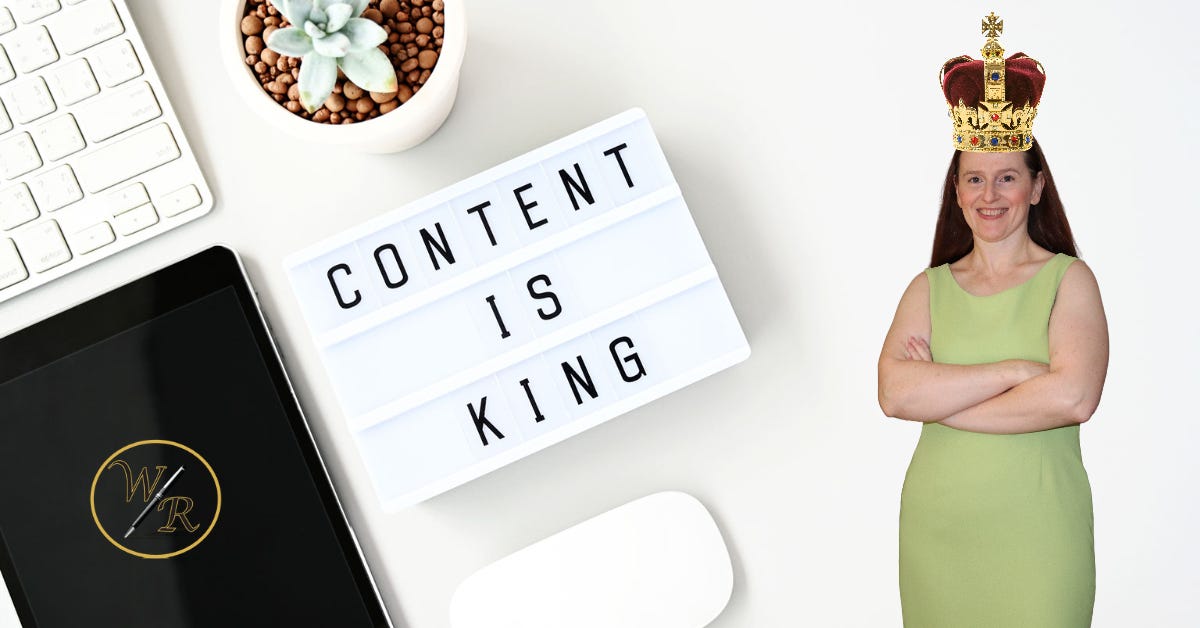Copywriter Designers: the Perfect Marriage of Two Complementary Crafts
A quarter of a century.
That is how long ago it was when I first drafted words and called myself a professional writer. Not only was I doing what I loved, but I was paying the bills while doing it.
Since I was old enough to hold a pencil, I would carry spare sheets of paper or a small notebook around in case the urge to write something struck me. Poems about squirrels preparing for winter and fanfiction about my favorite television programs were tops on my list back then. The older I became, the more in-depth my writing.
Until my junior year in high school, I mostly was flying blind with my writing. I knew I liked to write, but I had no direction. Then I met Ms. Sally Caruso, one of two English teachers who would set me on the path I now journey. She taught me a love for journalism. As the advisor for our student newspaper, she molded my writing into a journalistic style and showed me how to tune into my natural curiosity to produce newsworthy pieces.
Journalism became my new passion, and I fervently pursued it, graduating from the University of Pittsburgh with a degree to prove my knowledge and skill. I worked in the field for over a decade before motherhood prompted me to explore other avenues. The life of a journalist – working long, odd hours that are deadline-driven – was not compatible with family life. Still, abandoning my lifelong love of writing was not in the cards. Thus, The Write Reflection was born.
What is a copywriter?
Shifting gears from journalistic writing to sales-oriented copywriting was quite an adjustment. Journalism is storytelling, sure, but it also is a quest for the facts. Copywriting was storytelling, too, but with quite a different bent.
What, exactly, is a copywriter? If my son is to be believed, a copywriter is nothing more than a “processor of words.” That’s how he described my profession when he was 8 years old and demanding my attention. He ran into my office and proclaimed loudly, “Stop processing words, Mom, and come do something fun with me!”
He wasn’t entirely wrong. Many hours are spent at the computer, processing words to describe a product or service for one of my clients. Sometimes I must craft the right pitch to convert potential leads into brand ambassadors.
Sometimes my copy is used as part of a larger project, like a newsletter, magazine, or promotional flyer. When that happens, most copywriters are responsible for creating a creative brief for a graphic designer.
This brief outlines the objectives for the content, guiding the graphic designer in the best way to display your masterpiece. Sometimes this process works in reverse order, especially if I’m writing website content. The graphic designer provides me with a creative brief that dictates what kind of copy I write and how it will be displayed on the page. It is a symbiotic relationship.
What is a graphic designer?
Just as a copywriter communicates with words, a graphic designer connects with an audience through the visual arts. Graphic designers must be skilled in the art of visual thinking and creative problem-solving. In their quest to help their clients stand out in the crowd, graphic designers must go big or go home.
If you have ever enjoyed reading a magazine, a newspaper, a book, or a sales ad, you have a graphic designer to thank for the experience. Businesses rely on graphic designers to take their branded content and convey it in such a way as to captivate their customer base.
While being a graphic designer requires a love of visual arts and a creative flair, it also involves certain skills with the design software needed to create visually stunning pieces. One of the tools of the trade is Adobe Creative Cloud. With apps like Photoshop, InDesign, and Illustrator, Adobe CC is considered the gold standard in the graphic design industry.
Which comes first, the chicken or the egg?
Now that we know what a copywriter and graphic designer do, which comes first? This question has prevailed for as long as copywriters and graphic designers have collaborated. While copy and design inform each other, it is challenging to determine which logically should come first when working on a project.
Sometimes it is a no-brainer. For example, for a quarterly newsletter that maintains the same basic design from issue to issue, it makes more sense to work on the copy first, then plug it into the standard design and adjust it as needed.
When it comes to a website, it may make sense to create the design first, then fill it out with copy that complements the visual features while staying on brand. But not always. Sometimes websites should lead with copy and not design.
Copywriter vs. graphic designer
So, who holds the most influence over a project? This is hardly a case of Godzilla vs. Mothra. When it comes right down to it, you cannot have one without the other.
Copy and design work hand in hand to influence brand ambassadors and convert traffic into viable leads.
What are the benefits of using a copywriter designer?
In recent years, a growing trend has taken hold of the industry: the rise of the copywriter designer. It is not a complicated thing to explain, as it pretty much is exactly as it sounds.
Copywriters, in a quest to up the ante and increase their unique value propositions, learned graphic design skills. Now, they no longer need to play the chicken or the egg game. They control which logically should come first based on their workflow and project management needs.
Of course, not every copywriter is an effective graphic artist. While writing and designing are both creative fields, they are on different ends of the spectrum. The lucky few who manage to write and design tap into a basic need for most clients: keeping all their creative services in-house. It is more convenient for clients to work with one person for both the copy and design, streamlining the amount of time they spend explaining their needs and marketing goals.
Meet tight deadlines every time
The combination of skills is beneficial in other ways as well. When you are trying to meet a tight deadline, fewer things are more frustrating than being at the mercy of a graphic artist who may not get to your project as quickly as you – or your client – would like. The ability to write copy and design it into an attractive display eliminates this obstacle and boosts your net worth at the same time.
Early in my career, I worked with a graphic artist who repeatedly made me late on deadline with my clients. When one of those clients threatened to take their business elsewhere, it was the motivation I needed to become more proficient at graphic design.
I had taken graphic design courses in college but never loved it as much as writing. Still, I realized the value in keeping both services under my control, so I reintroduced myself to the wonders of Adobe and have not looked back since.
I count myself as one of the fortunate copywriters who can make a go of graphic design as part of a powerhouse service package for clients.
Upskill your writing talents
Nothing can ever replace the love I have for writing. It’s always going to be my primary skill and the talent I market myself on. However, we live in changing times, where organizations are interested in consultants who can handle more than one aspect of their marketing needs.
Upskilling is essential for staying relevant and competitive. Writers who expand their skill sets beyond the written word position themselves as valuable assets. Incorporating graphic design into your repertoire such as I did allows you to offer a more holistic approach to content creation, seamlessly blending compelling copy with visually appealing elements.
In an era where content is still king, but visual appeal is the queen, a writer who can wear both crowns will undoubtedly reign supreme.







